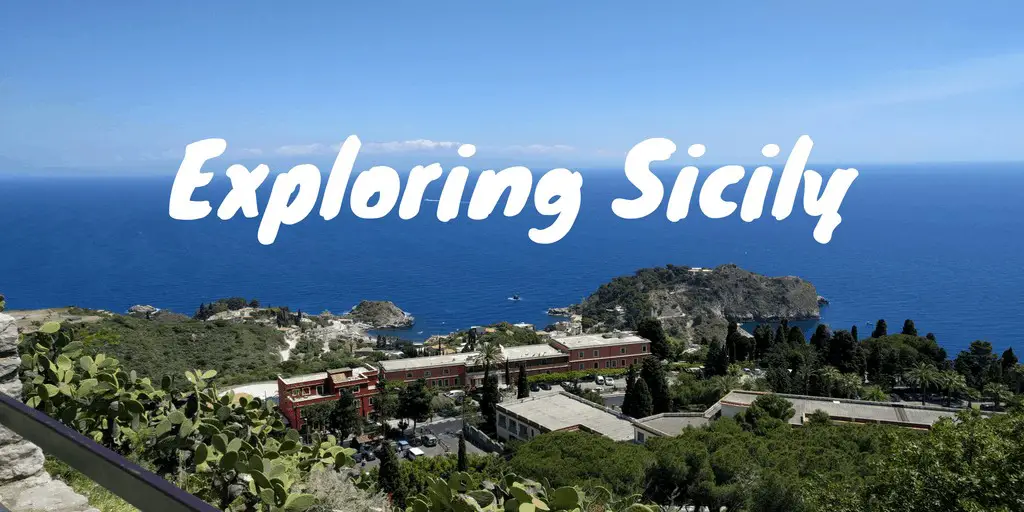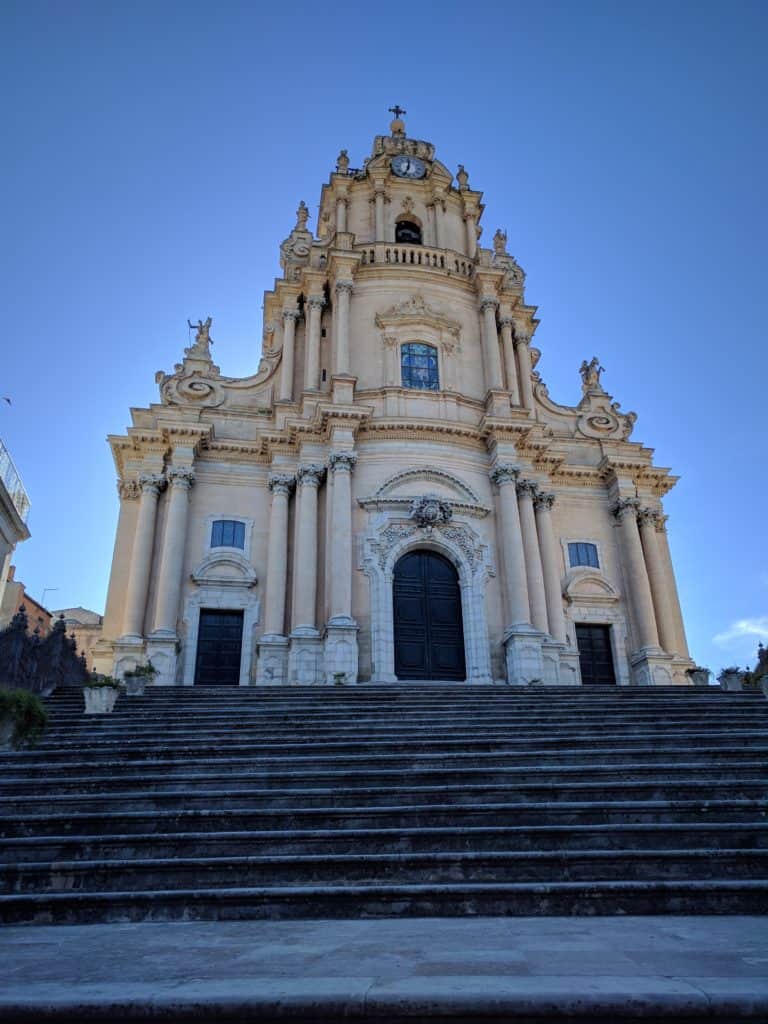Planning a trip to Sicily but don’t know where to begin?
Look no further! This 8 day itinerary includes:
-
Best way to travel around the island
-
A visit to 5 UNESCO Heritage Sites
-
What not to miss!
-
Driving tips for the island
This road trip takes in five UNESCO sites within around a weeks road trip! You can find info below on every site. My favourite site was the Aeolian Islands; eating pasta alla norma whilst watching a live volcano was an amazing spectacle. If you have longer than a week I would recommend visiting the islands for a few days for a relax.
The best way to travel around the island is definitely to hire a car. I used Hertz from Comiso airport.
Getting there
Flying into Comiso airport from Rome allowed me to view Etna from the sky, hire a car and travel along the east then north coast to Palermo where the car was dropped before flying back to London Gatwick.
Flights:
Rome (Fiumicino) to Comiso: £40 with checked bag.
Palermo to London Gatwick flight: £59 with checked in bag and chosen seat.
Top tips on car hire and driving in Sicily
- Get fully comprehensive insurance. This is my absolute number one tip. There’s no beating around the bush, Sicilian drivers are crazy. I dented my hire car within the first two hours and was so please I forked out for the extra cover so I didn’t have to worry about excess charges when I returned the vehicle. Please note I did only dent it once ?
- I struggled to find a car on the road that wasn’t scratched, battered, bruised or falling apart which is a sign of how erratic the drivers are. There isn’t really a concept of politeness on the road – each driver is out for themselves so be cautious and make sure you hold your position in lane and overtake on the left. Drivers tended to leave their left indicator on for the entire time they were overtaking.
- Leave daytime driving lights on even in the daytime. This is a Sicilian road rule and it does make you more visible to other cars especially when you are travelling in and out of tunnels on the Autostrada.
- The Autostrade is a toll road so make sure you take a ticket when you reach the barrier. Visit the barrier which says bigglietti and not just telepass. The toll roads are quite cheap, the most I paid was €4.50, the least was €0.80.
- Speed limits:
Autostrade, A roads i.e A19 – 130km/h
State roads, S or SS roads i.e SS113 – 110km/h
Built-up areas – 50km/h.
Gastronomic Val di Noto
The whole of Sicily is an gastronomical delight, but the Val di Noto region host the best variety in Sicily. The three main towns; Noto, Modica and Ragusa are best for getting lost and exploring the baroque churches, amazing patisseries and open piazzas.
In 1693 an earthquake hit this region, which meant the towns were re-designed in what is now known as the ‘sicilian baroque’ style.
Taste Aztec chocolate in Modica
[/fusion_li_item][fusion_li_item icon=”fa-check”]
Get lost in Ortygia, the historical centre of Syracuse
[/fusion_li_item][fusion_li_item icon=”fa-check”]
Admire the baroque beauties of Ragusa
Ragusa
A lovely piazza, nice views and some great food. Already at the start of May this little town was busy, so I’m not sure how pleasant it would be during the busy summer season but it’s worth checking out just for the Salumeria Barocco (Corso XXV Aprile, 80, 97100 Ragusa.) Arriving around 3:30 in the afternoon meant most restaurants were closed for food but luckily this delicious Salumeria(Italian sandwich shop/ deli) was open and available for us to sample some DOP local meat, cheese and wine.
Modica
For my two nights in the Val di Noto area, I chose to stay in Modica. There are numerous restaurants and a couple of lovely wine bars. Modica is famous for it’s chocolate, you have to visit Antica Dolceria Bonajuto. The chocolate is delicious in small chunks, and even reasonably priced! My favourite was the vanilla classic bar, wrapped in the same packaging used in 1911 – so cute!
Read more about the Bonajuto Story here
Noto
Noto is touristy on the main drag of Corso Vittorio Emanuele. There are kids on the street with Budgie’s trying to throw balls at you to make you buy one. Don’t fall for it! Take time to explore the streets off the main road. This fabulous coffee, cake, gelato and granita shop was my favourite stop as they served the largest marzipan fruits I have ever seen!
Pasticceria Gelateria Mandolfiore Via Ducezio 2, 96017 Noto, Sicily, Italy
Syracuse and the Rocky Necropolis of Pantalica
This UNESCO Heritage site includes two distinctive locations:
The Ancient Greek city of Syracuse and the Necropolis of Pantalica. Syracuse has been occupied for thousands of years. From the 9th century B.C. this coastal settlement was abandoned in favour of areas inland that were more difficult to reach. Areas such as Pantalica near the banks of two river in the midst of harsh rocky territory became inhabited, the remains of which we can see still see today!
Click here to read a brief history Syracuse, Ortygia and the Necropolis of Pantalica. This post covers everything you need to see during your visit!
Syracuse in its heyday was the largest city in the Ancient World, bigger than even Athens! The city was founded by Corinthian colonists who landed on the island of Ortygia in 734 BC and set up the mainland city of Syracuse four years later. Today, nearly 3,000 years later the citys medieval lanes lead out onto open baroque piazza’s from which you can wander down to the blue sea.
I spent a day here exploring the city but two days might be favourable if you have time.
Chiesa di Santa Lucia alla badia, Syracuse, Sicily
Located at the end of the same square of the cathedral, this church features Caravaggio’s Burial of St Lucy. Painted a year before his death, Lucy is the patron saint of the city. It’s worth popping your head in for a peak!
Mount Etna is a UNESCO World Heritage Site encompassing 19,237 uninhabited hectares on the highest part of Mount Etna.
- The highest Mediterranean island mountain and the most active stratovolcano in the world.
- The eruptive history of the volcano can be traced back 500,000 years and at least 2,700 years of this activity has been documented.
- The almost continuous eruptive activity of Mount Etna continues to influence volcanology, geophysics and other Earth sciences.
- The diverse and accessible range of volcanic features such as summit craters, cinder cones, lava flows and the Valle de Bove depression have made the site a prime destination for research and education.
Taormina is not inscribed on the official UNESCO site list, but is Sicily’s most popular summer destination. Perched high up on a hillside, this town offers the most stunning views and enables you to try some of Etna’s fantastic produce, without having to scale the volcano.
Although unashamedly touristy, Taormina is an absolutely beautiful spot. From the top you can see stunning views of Mount Etna and the Gulf of Naxos. The towns major highlight is the Greek Amphitheatre from which you gather some amazing snaps. Built in the 3rd Century BC it is the most dramatically located Greek theatre in the world. It is also the second largest in Sicily (after Syracuse.)
Open 9am- 1hr before sunset.
Entry is 10 Euros per adult.
Cefalù: A dazzling white beach & a cathedral built by the stormin’ Normans
In Cefalu, the long sandy beach and cute medieval street draw in the crowds. The beach is is packed as soon as the sun comes out, so be prepared for the crowds. The town is perfectly suited to slow wandering and exploration. The Cathedral is a UNESCO Heritage Site. At the time of visiting there was scaffolding covering the nave inside the cathedral. This is one of the jewels in Aicily’s Arab-Norman crown, only equalled in magnificence by Palermo’s Capella Palatina. Legend tells us that the cathedral was built in the 12th century by Roger II. You can admire the cathedral from the Piazza del Duomo where there are various places to enjoy a mid morning coffee of evening aperitivo.




